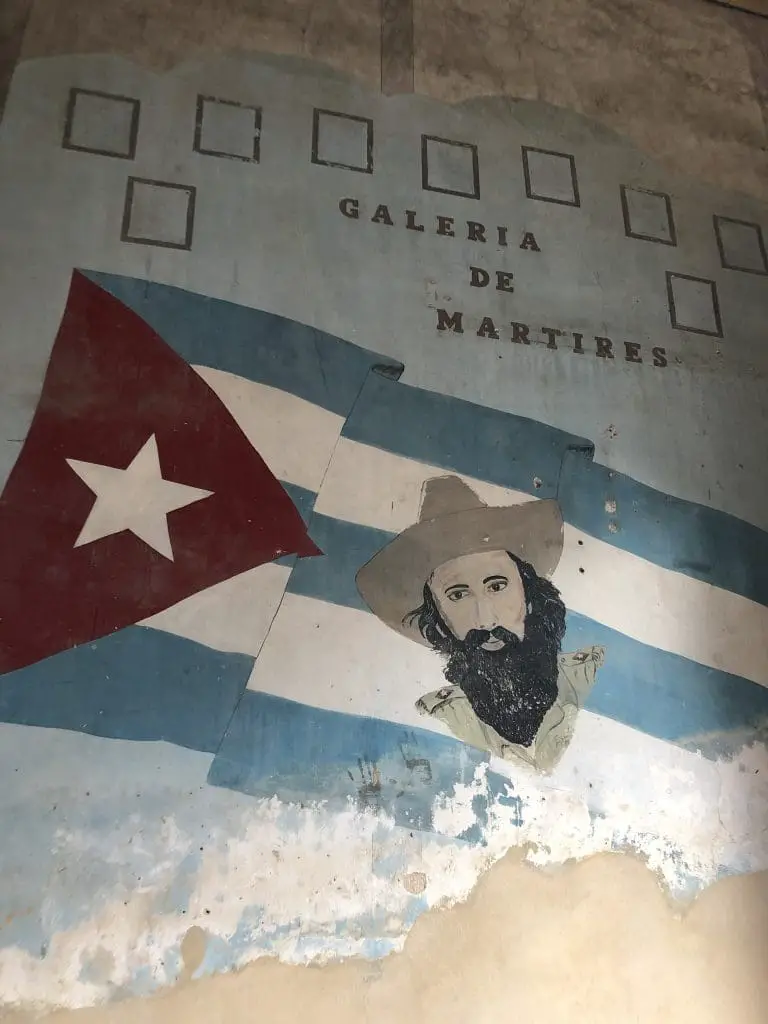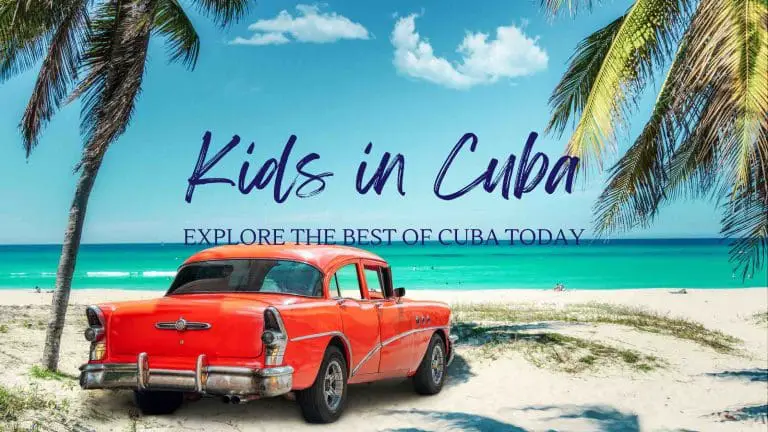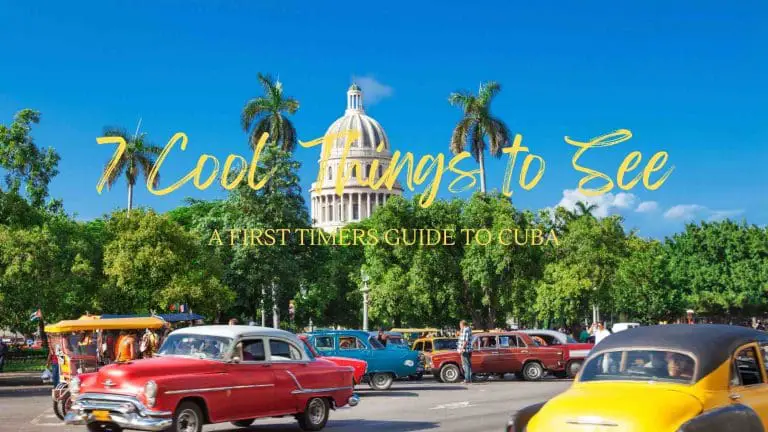Cuba On 50 Dollars A Day: Ultimate Guide To Budget Travel
Discovering the vibrant streets and sandy beaches of this Caribbean island while keeping your wallet happy is entirely possible. With flights to Cuba becoming more accessible, the dream of exploring its rich culture and history on a budget is now a reality. This guide is your ticket to experiencing the best of Cuba on 50 dollars a day, ensuring an adventure that’s both affordable and unforgettable.
Understanding the exchange rates and managing your expenses wisely are key to stretching your dollars. From savoring Cuban food to soaking in the sun at pristine beaches, every day can be filled with new and exciting experiences without breaking the bank. This guide will provide practical tips and insights to help you plan your trip, making sure every dollar is well spent.

Whether you’re wandering through the colorful streets of Havana, relaxing by the clear waters of a secluded beach, or interacting with the friendly Cuban people, this guide ensures your journey is filled with enriching experiences. Let’s dive into how you can make the most of your travel to this enchanting island, all while maintaining a budget of 50 dollars a day.
Table of contents
Preparing for Your Trip

Before setting off on your Cuban adventure, it’s vital to plan your trip carefully. Securing travel insurance and familiarizing yourself with the essentials for travel to Cuba can save you from unexpected hiccups. This preparation phase is crucial for a smooth and enjoyable journey, laying the foundation for your budget-friendly exploration of Cuba.
Understanding Money in Cuba
When planning a trip to Cuba, it’s important to understand the local currency landscape. The Cuban Convertible Peso (CUC) and the Moneda Nacional (CUP), also known as the Cuban Peso, are the two main currencies. For budget travelers, staying in casas particulares, typically ranging from 20 to 30 USD per night, and dining with a Cuban family can offer a deeper immersion into the local culture. Be aware that while Canadian dollars are often favored for exchange, carrying small denominations of cash is advisable, as debit and credit cards from the United States might not be accepted everywhere.
The Cuban Peso and Exchange Tips
Travelers should familiarize themselves with the Cuban Peso (CUP), primarily used among locals, to pay for street food, public transportation, and goods in local markets. Casas particulares, privately owned accommodations, provide an authentic and budget-friendly lodging option, allowing you to save on accommodation costs and immerse yourself in Cuban culture. Exploring the streets of Havana can lead to delicious and affordable Cuban food, enhancing your travel experience.
Securing internet access in Cuba can be challenging, but knowing where to find Wi-Fi spots, especially in tourist areas like Cayo Coco, can keep you connected without spending a lot. When planning a trip to Cuba, exchanging a portion of your currency to CUP can offer you more flexibility and help you access local prices, which are significantly lower than those in tourist-oriented establishments.
Accommodation Options Within Budget
Finding affordable accommodation is key to traveling in Cuba on 50 dollars a day. Accommodation costs vary, but with some research, travelers can find comfortable and budget-friendly options that allow for a deeper connection with the local culture and people.
Casa Particulars vs. Hostels
Casa particulars offer a unique and personal way to experience Cuba. For about 20 USD a night, you can book a casa in cities like Trinidad, enjoying a cozy room while supporting local families. This option not only provides a cultural immersion but also ensures that your money directly benefits the Cuban people.
Hostels, on the other hand, are a great way to meet other travelers and often provide basic but comfortable accommodations. While they might lack the personal touch of a casa particular, they are an economical choice for those looking to stretch their 50 dollars a day further in Cuba.
Budgeting for Food and Drinks
Enjoying food and drinks in Cuba doesn’t have to eat up your budget. By avoiding tourist restaurants and opting for local eateries, travelers can savor traditional dishes like a cheese sandwich or a plate of ropa vieja without spending a fortune. Street food and local markets offer delicious options at a fraction of the cost.
Where to Find Affordable Eats
Discovering affordable eats in Cuba is an adventure in itself. Local markets and street vendors are treasure troves of authentic Cuban cuisine, offering everything from fresh fruits to savory snacks at low prices. For a filling meal under 5 USD, look for small, family-run eateries away from the main tourist spots.
Dining with Cuban families through your casa particular can also provide a hearty and affordable meal option. This not only gives you the chance to try home-cooked Cuban dishes but also fosters meaningful cultural exchanges.

Navigating Transportation in Cuba
Traveling within Cuba on a budget requires some planning. From Havana to Trinidad, the island offers various transportation options, including public transportation, shared taxis, and buses, each providing a glimpse into the daily lives of Cuban people. Understanding these options and planning your routes can significantly reduce your travel expenses.
Bus stations in major cities serve as hubs for long-distance travel, such as from Havana to Santiago de Cuba, offering affordable fares for budget-conscious travelers. Exploring the local transportation system not only saves money but also provides an authentic Cuban experience.
Transportation on a Budget
Getting around Cuba doesn’t have to be expensive. With rides ranging from 2 USD within city limits to about 10 USD for longer distances, options like shared taxis and buses offer cost-effective ways to explore. Prices vary greatly, so having small bills handy and negotiating fares beforehand can help keep costs down. Remember, transportation costs can be a significant part of your budget, so plan wisely to make the most of your 50 dollars a day.
Buses, Taxis, and Other Local Options
Shared taxis, known as “colectivos,” are a popular and economical way to travel short distances or even between cities. These privately owned vehicles offer a more personalized travel experience and are an excellent way to meet locals and fellow travelers alike. For those planning longer journeys, rental cars might offer flexibility but remember to factor in fuel and rental costs to stay within budget.
Buses are another affordable option for getting around Cuba, connecting major cities and tourist destinations. While schedules can sometimes be unpredictable, buses provide a deeper look into Cuban life and are a budget-friendly choice for travelers aiming to experience Cuba on 50 dollars a day.
Tips for Hitchhiking and Shared Taxis

Hitchhiking and shared taxis are great ways to stretch your budget when exploring Cuba on 50 dollars a day. Hitchhiking is quite common and can be a way to meet locals. Always pick a safe spot to hitch a ride and go with your gut feeling about the driver. Shared taxis, known as “colectivos,” are an economical option too. Agree on the fare before getting in to avoid surprises.
For longer distances, shared taxis can be cheaper than tourist buses and offer a more authentic experience. However, be prepared for a cozy ride as they often fill to capacity. Remember, patience is key in Cuba; schedules aren’t always strict. Sharing a ride is not only budget-friendly but also a chance to share stories with fellow travelers or locals, enriching your travel experience.
Activities and Entertainment
In Cuba on 50 dollars a day, you can still enjoy vibrant activities and entertainment. From the lively streets of Havana to the tranquil beaches, Cuba offers a wealth of experiences that don’t have to break the bank. Keep an eye out for free concerts, street festivals, and local markets to immerse yourself in Cuban culture.
Free and Low-Cost Activities in Havana
Traveling to Cuba on 50 dollars a day doesn’t mean missing out on Havana’s charm. Stroll through the streets of Havana to soak in the city’s vibrant atmosphere, sample Cuban cuisine at local eateries, and visit cultural sites with no entrance fee. For a unique day trip, consider the journey from Havana to Viñales; local buses are an affordable option, though renting a car or a car rental with a group can offer more flexibility.
Exploring Cultural Sites and Beaches
Exploring Cuba’s cultural sites and beaches is a highlight of any trip. Many of Havana’s museums and historical sites have low entrance fees, making them accessible on a budget. The beaches, especially those a bit further from the tourist hotspots, can provide a day of relaxation and beauty without costing a dime—just remember to bring your snacks and water.
Outside the capital, towns like Trinidad offer rich history and stunning architecture. The entrance fees to most places in Trinidad are minimal, allowing for a full day of exploration under the sun. Whether it’s wandering through colonial streets or lounging on sandy shores, Cuba offers endless opportunities for budget-friendly adventure.
Budget-Friendly Entertainment Options
Even with just 50 dollars a day, Cuba offers plenty of budget-friendly entertainment. Trinidad, for example, is known for its vibrant music scene. Many bars and cafes host live music performances with no cover charge. Enjoying the rhythms of salsa and son in a local venue is a must-do experience that won’t strain your budget.
Local Music and Dance Venues
Music and dance are at the heart of Cuban culture. In Havana and beyond, you can find numerous local venues where bands play traditional Cuban music. While some might have a small cover charge, it’s often worth it for the live entertainment and the chance to dance the night away. Look out for community centers and public squares where locals gather to dance—joining in is free and an unforgettable way to connect with Cuban culture.
For those interested in learning salsa, affordable dance classes are offered in many cities. These classes provide a fun way to immerse yourself in Cuban culture while meeting new people. Whether you’re an experienced dancer or have two left feet, the infectious music and friendly locals will have you moving in no time.
Making the Most of Your Money
Planning a trip to Cuba on 50 dollars a day requires smart money management. Being mindful of your spending on accommodations, food, and transportation will allow you to enjoy the richness of Cuban culture without overspending. Prioritize experiences over souvenirs, and embrace the local way of life to make the most of your budget.
How to Exchange Your Cash to Pesos
When you arrive, exchanging your money is one of the first tasks. In Cuba, it’s best to exchange a bit of cash into Cuban currency at official exchange offices in tourist areas. Whether you bring USD or Euro, be aware of the current exchange rates. Avoid black-market exchanges to ensure you’re getting a fair deal. Smaller denominations are handy for everyday purchases.
Best Practices for Currency Exchange

Cuba’s dual currency system can be confusing for travelers. To navigate this, familiarize yourself with the most commonly used currency for tourists. Always exchange your money at official currency exchange offices or banks to get the most reliable rates. Keep an eye on the exchange rates and transaction fees to manage your budget effectively.
It’s also wise to exchange just enough money to cover your expenses for a few days. This approach minimizes the risk of having excess local currency at the end of your trip. Remember, converting Cuban currency back to USD or Euro might not be straightforward, so plan your exchanges wisely.
Daily Budget Breakdown
A day in Cuba on 50 dollars can be rich in experiences. Spend about 5 USD for breakfast at your casa, set aside 10 USD for other meals, and use 30 USD for activities like taking a tour in Cuba or visiting attractions. The remaining money can cover transportation or a treat like a refreshing Mojito. This way, you’ll enjoy a full day of Cuban adventures without overspending.
A Sample Day under 50 Dollars
Imagine starting your day with a hearty breakfast at your casa for 2 USD, then hopping on a local bus to explore Havana’s historic sites, costing around 5 USD for the day. Lunch from a street vendor might be another 5 USD, leaving you with plenty to enjoy a guided tour in Cuba or entry fees to museums. End the day with a delicious dinner for 10 USD and a stroll through the moonlit streets, experiencing Cuba’s vibrant nightlife.
This sample day shows that traveling to Cuba on 50 dollars a day is not only possible but can also be incredibly rewarding. With careful planning and local insights, you can uncover the true essence of Cuba without breaking the bank. Embrace the adventure, and let Cuba’s warmth and culture envelop you.

Staying Connected
Staying connected in Cuba on a budget is easier than you might think. Internet access in Cuba has improved, but it’s still not as readily available or cheap as in other countries. For just 1 USD, you can buy an internet card that gives you an hour of online time. These cards can be used at public Wi-Fi hotspots, often found in parks and public squares.
Many accommodations in Cuba, including casas particulares, now offer Wi-Fi to guests. While it might not be free, it’s a convenient option for checking emails or uploading your travel photos. Remember, part of the charm of Cuba is disconnecting from the digital world and connecting with its people and culture.
Affordable Internet and Communication Options
For travelers in Cuba on 50 dollars a day, finding affordable internet and communication options is key. Besides purchasing internet cards, staying in accommodations in Cuba that offer Wi-Fi can help you stay connected. This way, you can plan your days, share experiences, and keep in touch with loved ones without spending a lot.
Purchasing Internet Cards and Finding Wi-Fi
Internet cards are a lifeline for internet access in Cuba. Available at ETECSA offices and sometimes at your accommodations, these cards offer access to Wi-Fi hotspots. Tourist buses and some public areas in cities are equipped with Wi-Fi, making it easy to connect when you’re on the go. Just look for the crowds of people gathered around, likely staring at their phones.
Wi-Fi in Cuba isn’t as widespread as in other countries, but it’s part of the adventure. Finding a hotspot can lead you to beautiful parks and lively squares where you can people-watch while you surf the web. This blend of the old and new is what makes traveling to Cuba on 50 dollars a day such a unique experience.
Safety and Travel Tips

Exploring Cuba on 50 dollars a day is an adventure that’s both exciting and safe. This Cuba budget guide will help with logistics as well. Stick to well-traveled streets of Havana and other cities, enjoy the delicious Cuban food, and consider staying in casas particulares for a genuine and secure lodging option. These privately owned homes are not only affordable but also offer a chance to immerse yourself in the local culture, with hosts often serving as informal tour guides. Remember to stay hydrated, protect yourself from the sun, and most importantly, embrace the spontaneity and warmth of Cuban hospitality.
Navigating Cuba as an American
Traveling to Cuba as an American requires a rough estimate of both patience and preparation. Understanding the specific regulations that apply to American tourists, such as restrictions on spending money in certain sectors and the necessity of traveling under one of the 12 authorized categories, is crucial. Information is readily available but verifying its current accuracy can make the difference in planning your trip smoothly.
Story time on Cuba and green card visa holders for the United States. My husband and I travelled to Cuba in 2019. I’m an American and he’s a Filipino with his green card (visa) for the US. We went for a week and had the best time. On the way home, we were delayed at the airport. His visa for the USA was from 1987. His visa never expired, because back then certain visa didn’t expire. So, it was the laminated white card with his picture on his from when he was 15 years old. After a phone call was made, we got onto the plane and flew back to JFK. When he finally applied for his naturalization in 2021, traveling to Cuba wasn’t an issue. He disclosed that we went for a week and they never asked another question about it. In case any visa holders from the US was curious.
Visa Requirements and Safety Tips
American travelers need to obtain a tourist card, often referred to as a Cuban visa, before entering Cuba. This process can usually be done through your airline or a travel agency specializing in Cuba trips. It’s important to have all required documents organized and accessible, including proof of health insurance, as Cuba mandates health insurance for all visitors. Keeping copies of your documents in a secure digital format is also recommended.
Regarding safety, Cuba is generally considered safe for tourists. However, like in any travel destination, exercising common sense and caution is advised. Avoid unlit and secluded areas at night, and be wary of scams targeting tourists. Engaging with locals can enrich your experience, but always be mindful of the boundaries of cultural differences.
Cultural Insights and Respectful Travel
Respect and understanding go a long way when visiting Cuba. Recognizing the significance of local customs and the economic disparities between tourists and most Cubans can enhance mutual respect. Learning basic Spanish phrases can help break the ice and show appreciation for the local culture. Remember, a smile and a polite demeanor can be as valuable as any currency in Cuba.
Understanding Local Customs and Etiquette

In Cuba, greeting people with a warm “Buenos días” or “Buenas tardes” is common and shows respect. When dining in someone’s home or a local restaurant, expressing gratitude for the meal is appreciated. Tipping, while not mandatory, is a kind gesture, especially considering the economic situation. Cubans are proud of their country’s rich history and culture, so showing interest and respect towards their traditions will make your interactions more meaningful.
Another aspect of Cuban etiquette involves dressing modestly when visiting religious or cultural sites. While Cubans are known for their vibrant nightlife, respecting the local environment and not engaging in rowdy behavior is expected. Remember, you’re a guest in their country, and your actions should reflect your respect for their traditions and norms.
Conclusion
Exploring Cuba on 50 dollars a day is not only possible but can also be an enriching experience. By prioritizing experiences over material goods, embracing the local culture, and being mindful of spending, travelers can discover the true essence of Cuba. Staying informed about the local currency, transportation options, and cultural etiquette will enhance your journey, making it memorable and affordable.
Ultimately, the key to a successful Cuban adventure lies in open-mindedness and flexibility. Embrace the unexpected, whether it’s a spontaneous dance in the street, a new friendship, or a hidden culinary gem. Cuba has much to offer beyond its beautiful beaches and historic sites; its people, culture, and spirit are what truly make it unique. By following these tips and embracing the adventure, your trip to Cuba on 50 dollars a day will be an unforgettable experience.
Maximizing Your Cuba Experience on a Budget
Maximizing your Cuba experience on 50 dollars a day involves smart planning and an adventurous spirit. Enjoying traditional dishes like arroz con pollo (chicken and rice) for just 1-3 USD, sipping on fresh fruit juices, and exploring the island’s natural beauty can all be done within budget. Transportation costs can be minimized by using buses and shared taxis, allowing for more funds to enjoy the rich cultural experiences Cuba offers. By focusing on the vibrant life, music, and people, your trip will be filled with priceless memories without breaking the bank.
Final Thoughts and Travel Wisdom
Embarking on a Cuban adventure with a budget of 50 dollars a day is an invitation to immerse yourself fully in the rhythm and warmth of this captivating island. It’s a journey that proves the value of experiences over material possessions, where the richness of culture and human connection takes center stage. Through careful planning, embracing local traditions, and prioritizing meaningful interactions, your trip will not only be cost-effective but deeply enriching.
Remember, the essence of travel lies in the experiences we collect and the memories we create. Cuba, with its unmatched spirit and hospitality, offers a unique backdrop for an unforgettable adventure. So pack your bags, but leave room for the unexpected joys and discoveries that await. With a little creativity and a lot of curiosity, Cuba on 50 dollars a day is not just possible—it’s the journey of a lifetime.




